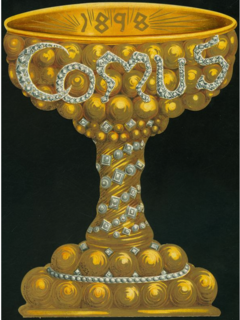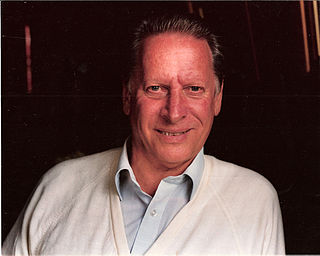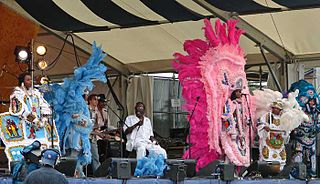Related Research Articles

The Mistick Krewe of Comus, founded in 1856, is a New Orleans, Louisiana, Carnival Krewe. It is the oldest continuous organization of New Orleans Mardi Gras festivities.

The Carnival of the Animals is a humorous musical suite of fourteen movements by the French composer Camille Saint-Saëns. The work, about 25 minutes in duration, was written for private performance by two pianos and chamber ensemble; Saint-Saëns prohibited public performance of the work during his lifetime, feeling that its frivolity would damage his standing as a serious composer. The suite was published in 1922, the year after his death. A public performance in the same year was greeted with enthusiasm, and the work has remained among his most popular. In addition to the original version for chamber ensemble, the suite is frequently performed with a full orchestral complement of strings.

The holiday of Mardi Gras is celebrated in all of Louisiana, including the city of New Orleans. Celebrations are concentrated for about two weeks before and through Shrove Tuesday, the day before Ash Wednesday. Usually there is one major parade each day ; many days have several large parades. The largest and most elaborate parades take place the last five days of the Mardi Gras season. In the final week, many events occur throughout New Orleans and surrounding communities, including parades and balls.

A medieval pageant is a form of procession traditionally associated with both secular and religious rituals, often with a narrative structure. Pageantry was an important aspect of medieval European seasonal festivals, in particular around the celebration of Corpus Christi, which began after the thirteenth century. This festival reenacted the entire history of the world, in processional performance, from Bible's Genesis to the Apocalypse, employing hundreds of performers and mobile scenic elements. Plays were performed on mobile stages, called waggons, that traveled through towns so plays could be watched consecutively. Each waggon was sponsored by a guild who wrote, designed, and acted in the plays.

Henri Benjamin Rabaud was a French conductor, composer and pedagogue, who held important posts in the French musical establishment and upheld mainly conservative trends in French music in the first half of the twentieth century.

Chief Allison "Tootie" Montana, a lather by trade, was a New Orleans cultural icon who acted as the Mardi Gras Indian "chief of chiefs" for over 50 years. Tootie is revered in the Mardi Gras Indian culture as the Big Chief who is responsible for changing the violent way of the Indians' culture. Tootie was Big Chief of the Yellow Pocahontas Tribe and made the culture of the Mardi Gras Indians about pageantry rather than violence.

Le prophète is a grand opera in five acts by Giacomo Meyerbeer, which was premiered in Paris on 16 April 1849. The French-language libretto was by Eugène Scribe and Émile Deschamps, after passages from the Essay on the Manners and Spirit of Nations by Voltaire. The plot is based on the life of John of Leiden, Anabaptist leader and self-proclaimed "King of Münster" in the 16th century.

Acante et Céphise, ou La sympathie is an opera by Jean-Philippe Rameau, first performed on 19 November 1751 at the Opéra in Paris. It takes the form of a pastorale héroïque in three acts. The librettist was Jean-François Marmontel. The opera was written to celebrate the birth of the Louis, Duke of Burgundy, the elder brother of the future King Louis XVI.
Patricia Kern was a British mezzo-soprano and voice teacher.

The first unofficial American Mardi Gras took place on March 3, 1699, when French explorers Pierre Le Moyne D'Iberville and Sieur de Bienville landed near present-day New Orleans, Louisiana. They held a small celebration and dubbed their landing spot Point du Mardi Gras. There were many other unofficial French celebrations on the Gulf and Atlantic coasts during the 17th century.

Edwin James Nairn Carr was a composer of classical music from New Zealand.

The Wild Magnolias are a Mardi Gras Indian tribe who also record and play as a funk musical act from New Orleans, Louisiana.

Mardi Gras in the United States is not observed nationally across the country, largely due to the country's Protestant and Anglo roots. Mardi Gras and Carnival are mostly Catholic holidays, while the United States has a Protestant-majority population. However, a number of cities and regions in the U.S. have notable Mardi Gras or Carnival celebrations. Most of these places trace their Mardi Gras celebrations to French, Spanish, and other Catholic colonial influences on the settlements over their history. The earliest Carnival celebration in North America occurred at a place on the west bank of the Mississippi River about 60 miles (97 km) downriver from where New Orleans is today; this Mardi Gras on March 3, 1699, and in honor of this holiday, Pierre Le Moyne, Sieur d'Iberville, a 38-year-old French Canadian, named the spot Point du Mardi Gras near Fort Jackson. The earliest organized Carnival celebrations occurred in Mobile, Biloxi, New Orleans, and Pensacola, which have each developed separate traditions. In addition, modern activities generally vary from city to city across the U.S.

The Paris Carnival is a carnival in the city of Paris in France. It occurs after the Feast of Fools and has been held since the sixteenth century or earlier, with a long 20th century interregnum.
April Cantelo is an English soprano.

English National Opera (ENO) is an opera company based in London, resident at the London Coliseum in St Martin's Lane. It is one of the two principal opera companies in London, along with the Royal Opera, Covent Garden. ENO's productions are sung in English. The company, formerly known as Sadler's Wells Opera, has long had a policy of commissioning new works, and has staged many world and British premieres.

Linus was an opera by Jean-Philippe Rameau with a libretto by Charles-Antoine Leclerc de La Bruère. For reasons which remain unclear it was never staged and the music is almost completely lost. Only two manuscript copies of the libretto and two manuscript copies of the violin part survive. The work takes the form of a tragédie en musique in five acts. Linus was in rehearsal in 1751 but the score was apparently stolen in confused circumstances.
Krewe of Okeanos is a New Orleans Mardi Gras krewe.
References
- 1 2 Covell, R. The Violins of Saint-Jacques. In: The New Grove Dictionary of Opera . Macmillan, London & New York, 1997.
- ↑ Tate Gallery page on William Chappell accessed 18 November 2013.
- 1 2 3 4 5 Webber, C. Guilty Pleasures? Christopher Webber makes the case for Malcolm Williamson. Opera , August 2013, 988-991.
- 1 2 Reid, Charles. Opera - Tune Spotting. The Spectator , 9 Dec 1966, p18.
- 1 2 Walsh, S. A Memory of Violins. Opera , 1966, p851-855.
- ↑ ENO 1984 USA Tour programme brochure, p79.
- ↑ Blyth, A. Review of first revival of The Violins of Saint-Jacques in October 1967. Opera , 1967, p1018-19.
- ↑ Musical Times Vol 108, No 1487, Jan 1967, p52.
- ↑ ABC TV at Gore Hill in the Fifties accessed 13 November 2013.
- ↑ V&A Collection. Accessed 19 November 2013.
- ↑ Opera Scotland.Org website accessed 16 November 2013.
- ↑ Rosenthal, HD. Review of premiere of The Violins of Saint-Jacques. Opera, January 1967, p73-75.
- ↑ Josef Weinberger Ltd website